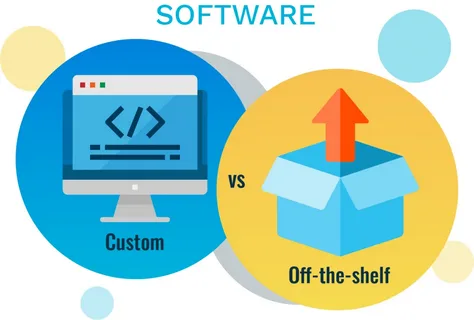Off-the-shelf software solutions, while designed for mass appeal, often fall short when it comes to addressing the specific needs of individual businesses. It’s like trying to fit a square peg into a round hole. Your business—with its unique workflows, customer requirements, and challenges—deserves a solution built to reflect its distinctiveness.
If you’re constantly adapting your processes to fit a generic solution, it may be time to consider custom SaaS development.
Let’s explore the key challenges that indicate custom SaaS might be the right choice and examine its potential to transform your business.
Signs Your Business Needs Custom SaaS Development
Ask yourself: Are you grappling with any of these challenges?
- Your current software doesn’t integrate well with workflows.
- You struggle to find a solution that meets your industry’s specialized requirements.
- Your software lacks flexibility to scale as your business grows.
- Concerns over data security and privacy are mounting with generic software.
- Limitations in your software are affecting customer experience.
- Your team spends excessive time on manual tasks that could be automated.
If any of these resonate with you, a custom SaaS solution may be the answer.
What is Custom SaaS Development?
Custom SaaS development involves creating software solutions specifically tailored to your company’s needs and goals. Unlike off-the-shelf tools, custom SaaS platforms provide flexibility, scalability, and enhanced security—allowing you to fully align technology with your business strategy.
According to a Gartner report, SaaS spending is expected to increase by 20.4% in 2024, reaching $675.4 billion. More than 91% of companies view SaaS as a catalyst for adopting emerging technologies, highlighting the growing role of custom solutions in innovation.
Custom SaaS vs. Off-the-Shelf Solutions: A Comparison
Feature | Custom SaaS Solution | Off-the-Shelf Software |
Customization | Fully tailored to specific business needs | Limited customization |
Scalability | Built to grow with your business | Requires additional purchases or upgrades |
Cost | Higher upfront investment, lower long-term costs | Lower initial cost, higher long-term expenses |
Implementation Time | Longer development timeline | Immediate availability |
Support | Dedicated, personalized support | General support, often with extra fees |
Ownership | Full control and ownership of the software | Vendor retains control and ownership |
Why Custom SaaS Development Matters
Custom SaaS solutions have far-reaching benefits for every stakeholder in your business:
- For Business Owners and Executives: Align technology with overarching business goals and gain a competitive edge.
- For IT Leaders: Build transformative systems that are flexible, secure, and scalable.
- For Product Managers: Create seamless, user-friendly experiences tailored to customer needs.
Beyond internal benefits, custom SaaS serves as a catalyst for:
- Startups to scale rapidly and compete with larger players.
- Compliance in industries with strict regulations.
- Flexibility to innovate and adapt in rapidly changing markets.
Key Considerations Before Starting Your Custom SaaS Project
To maximize the impact of your custom SaaS development, address the following:
- Define Clear Goals
Set SMART goals (Specific, Measurable, Achievable, Relevant, Time-bound) to focus your efforts. Identify must-have features that align with your business strategy.
- Plan for Scalability
Design your system to handle increased workloads, new features, and changing requirements. Leverage cloud platforms like AWS or Microsoft Azure for robust scalability.
- Implement Best Security Practices
Security should be a top priority. Employ encryption, multi-factor authentication, and regular security audits. Ensure compliance with regulations such as GDPR or CCPA to mitigate risks.
- Understand Costs
Custom SaaS development involves an upfront investment. Factors influencing cost include project scope, technologies used, third-party integrations, and security requirements. While the initial expense may be higher, long-term savings are realized through improved efficiency, ownership, and reduced licensing fees.
Choosing the Right Development Partner
The success of your custom SaaS project largely depends on selecting the right development partner. Here are key factors to consider:
- Evaluate Technical Expertise
- Ensure your partner has experience with the technologies relevant to your needs (e.g., AI, blockchain, or data analytics).
- Look for a partner capable of evolving your solution over time, even if certain technologies (like AI/ML) aren’t immediately required.
- Review Industry Knowledge
An experienced partner in your industry can offer valuable insights and best practices tailored to your specific challenges.
- Balance Cost and Quality
While budget constraints matter, choosing the cheapest option may compromise quality. Prioritize a partner with a proven track record of delivering outcomes, not just outputs.
- Ensure Strong Communication and Collaboration
Effective collaboration—through a mix of real-time and asynchronous communication—ensures smoother project execution. Look for a partner with a shared vision and customer-focused approach.
Conclusion: Unlock Your Business Potential with Custom SaaS
Custom SaaS development represents a transformative opportunity for medium and large enterprises. By tailoring a solution to your business’s unique needs, you can streamline workflows, enhance customer experiences, and position your organization for long-term growth.
Whether you’re struggling with inefficient workflows, scalability limitations, or data security concerns, custom SaaS offers the flexibility, control, and innovation needed to overcome these challenges.
Ready to explore how custom SaaS can unlock your business potential? Let’s discuss how to turn your vision into reality.




